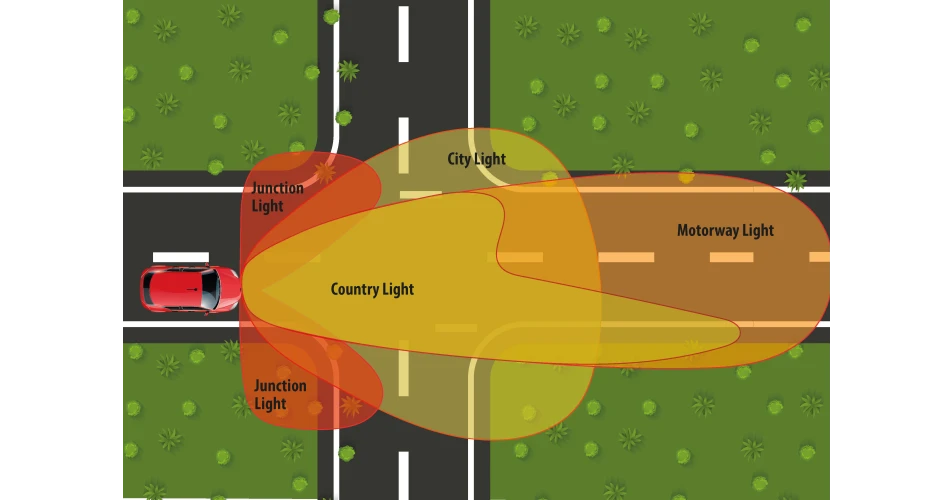The term “adaptive headlamp” refers to technology that is designed to allow drivers to see further, around corners and past traffic using brighter and more efficient lights. Headlights that actively respond to changing conditions, allows more time to react to conditions ahead. The term can include different strategies to achieve this and automate the use of lights on the motorist’s behalf, some systems are more technology dependent than others. It is best to replace lights in pairs to avoid a brightness mismatch.
Cornering lights The most simplistic method and perhaps the early adopter of this idea. Cornering lights sit next to the main lights of the vehicle, switching on and off when corning. They are fixed in position and activate in response to the steering wheel turn or activation of an indicator. They switch off when the turn signal cancels, or the driver returns the steering wheel to a straight position. This system has been available, mainly for luxury vehicles, for decades.
Curve-adaptive lights Just for fun, these are sometime also referred to as cornering lights but are smarter than their earlier siblings. Curve-adaptive lights pivot the unit’s light source, mounted on motors or servos, toward the direction of travel to better illuminate the path ahead. Some go further by subtle changes in angle in relation to the vehicle’s speed and there are systems that can react to a detection of an upcoming curvature in the road. They can use the existing front fog lamps or be incorporated into the headlight unit.
Automatic high beams The vehicle has the high beam set by default, switching to dipped beam when sensing another motorist by using sensors to detect the lights of other vehicles. The system can be manually overridden, and headlamp controls used in the conventional way if preferred, or if environmental conditions do not switch from main to dipped fast enough and cause dazzling.
Adaptive Driving Beams (ADB) What makes ADB different is that the units are made up of many individual, very bright, adjustable LED lights in an array. The precision control software reacts to sensors fitted to the vehicle, creating brightness around other vehicles but projecting a “shadow” where dazzle to other motorists could occur. Instead of simply switching LEDs on or off, each one dims or brightens according to need, maximising brightness whilst reducing glare for oncoming traffic.
Are they any good? Evidence suggests that insurance claims are reduced in vehicles with adaptive headlights, and it is one less task for a motorist to concentrate on, leaving them to focus on the road whilst being considerate of other road users. Generally, the more complex the technology, the more expensive it is to design, install, maintain, and repair – but like ABS, it is already filtering down the model ranges and due to the safety aspect, it may become a standard expectation in a short space of time.
Found on Cornering lights
• 1962 Cadillac (standard equipment for every model)
Curve adaptive lights
• Tesla Model 3
• all Seats with Bi-Xenon headlights
Automatic high beam
• Nissan Juke
ADB
• Range Rover Evoque
Hayley Pells is an experienced technician and garage owner, who has used her knowledge and skills gained in the industry over many years to become a writer, consultant and trainer on a wide variety of automotive subject matter.
Headlamps are one of the most regular failed items on a vehicle, the terminology can get confusing for motorists when discussing adaptive headlamps. Here is a guide to the different types and examples on where to find them.
To read more of this technical article or download the entire article click
here. There are lots more Tech Tips to view, and they are all searchable, on
TechTips.ie.
 Some of the patterns from different Adaptive Healamps
Some of the patterns from different Adaptive Healamps